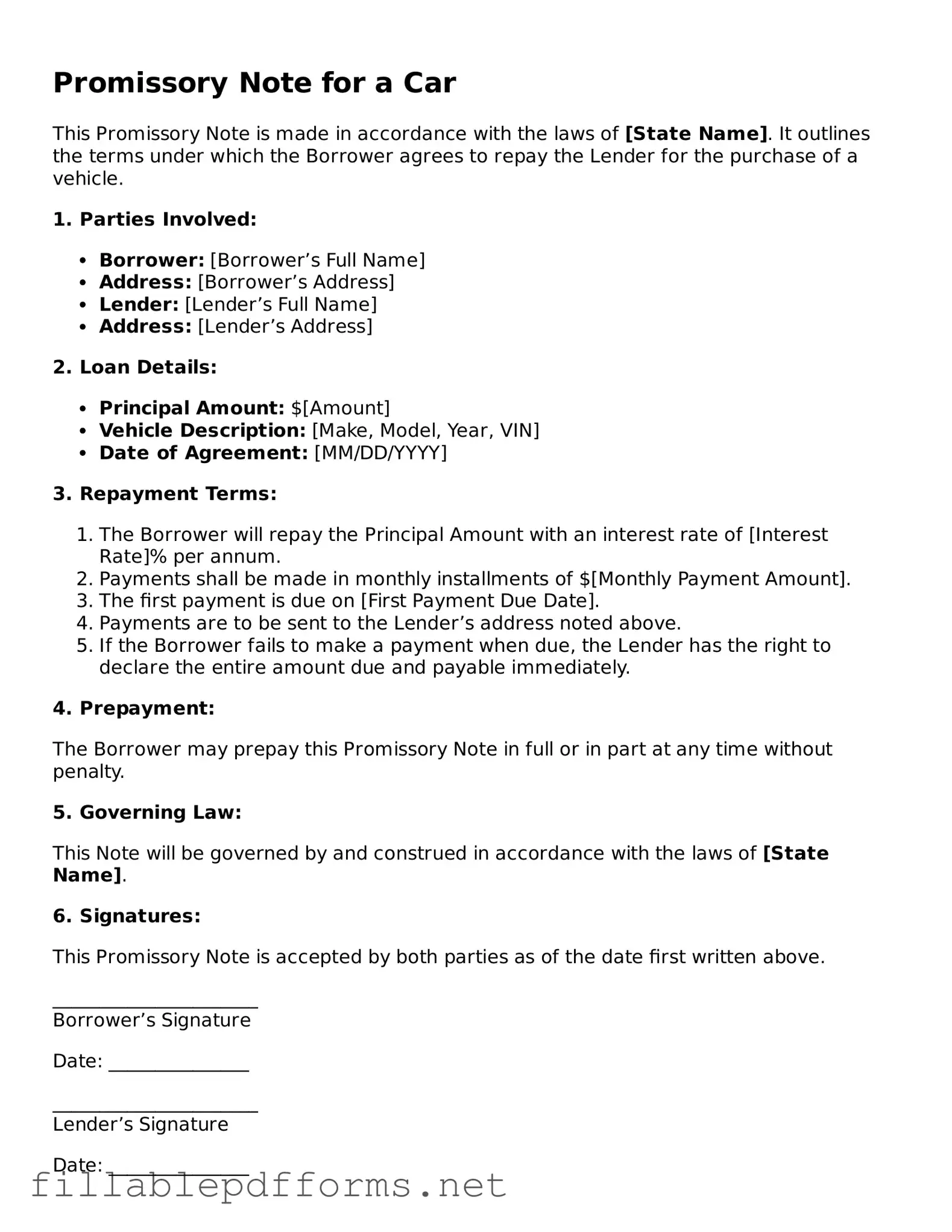When purchasing a car, especially through a private sale or a financing agreement, a Promissory Note for a Car can be an essential document. This form outlines the borrower's promise to repay the lender for the vehicle's purchase price, detailing the terms of the loan. It typically includes important information such as the amount borrowed, the interest rate, the repayment schedule, and any consequences for late payments or defaults. The note serves as a legal record of the transaction, protecting both the buyer and the seller. By clearly stating the obligations of each party, it helps prevent misunderstandings down the road. Additionally, the Promissory Note can specify whether the loan is secured by the car itself, which means the lender can reclaim the vehicle if payments are not made. Understanding this form is crucial for anyone entering into a car financing agreement, as it lays the groundwork for a smooth transaction and fosters trust between the parties involved.
